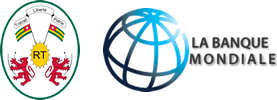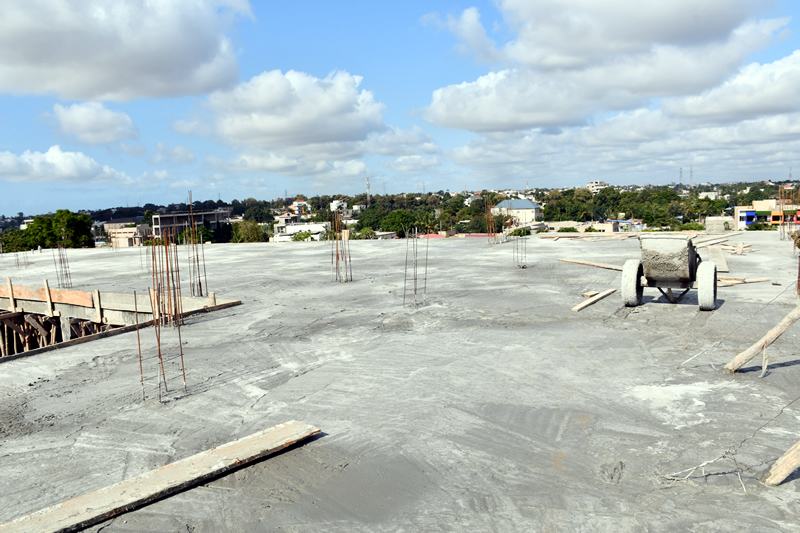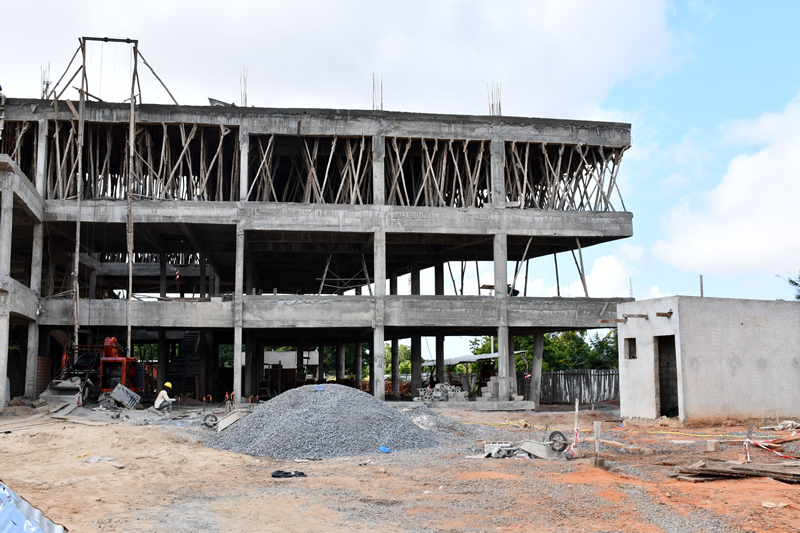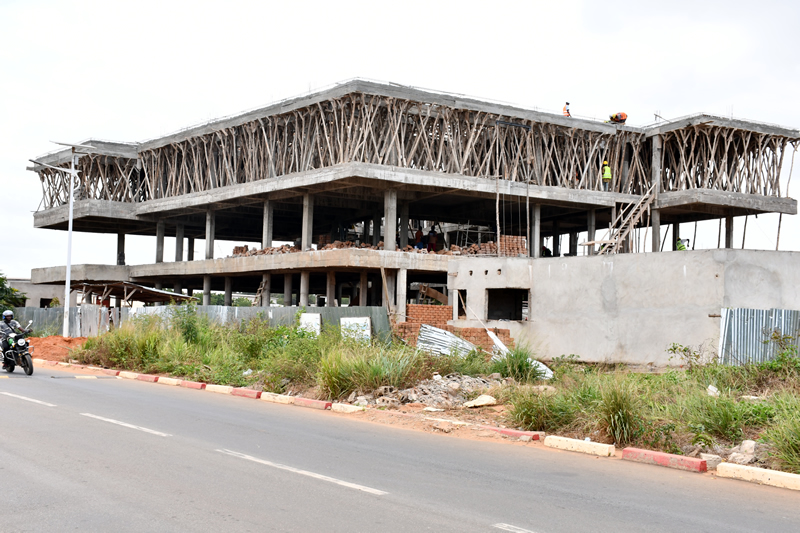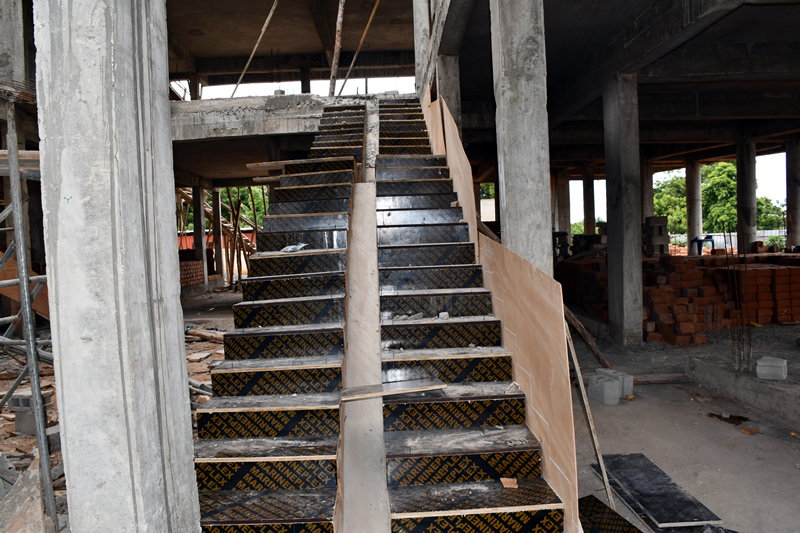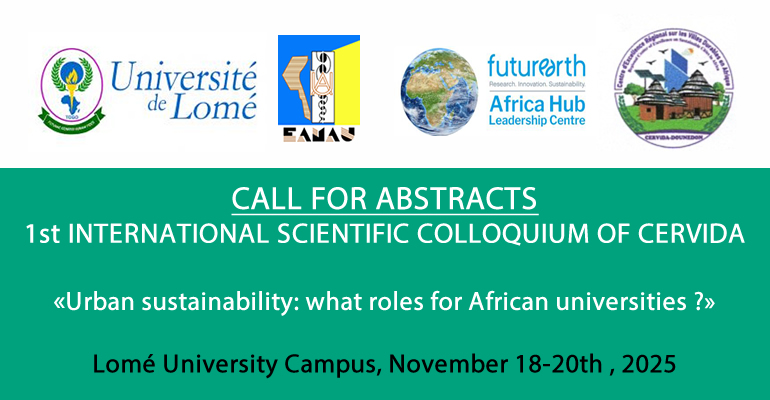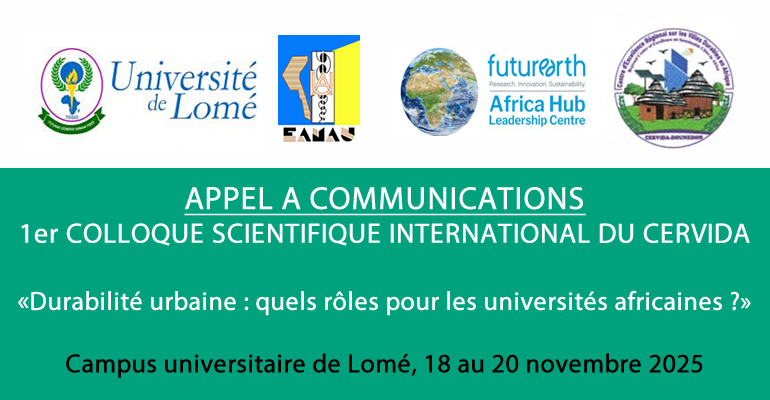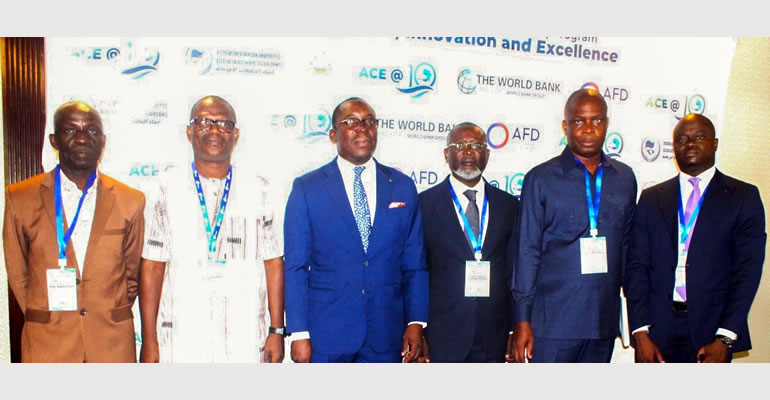Stakeholder-Based Optimal Indicators for Urban Sustainability Assessment in Sub-Saharan Africa: A Case Study from the City of Moundou in Chad 26 Septembre 2024
Ernest Haou 1,*, Ndonaye Allarané 1,2 , Cyprien Coffi Aholou 1 and Ouya Bondoro 3
Abstract: Over the last two decades, scientific studies have increasingly highlighted the vulnerability of cities to global changes, especially in sub-Saharan Africa, where climate phenomena and urbanization are intensifying. These realities necessitate a reassessment of current urban management models in order to reaffirm the central role of cities in promoting sustainability. In this context, establishing a robust scientific foundation for evaluating the transition processes of cities towards sustainability is essential. This article presents a methodology developed to select and validate indicators, taking into account local issues and the needs expressed by stakeholders. The research was conducted using a mixed-methods approach, which included a literature review, consultations with populations from five study districts, analysis of the indicator needs of development stakeholders, adoption of two methods, and validation of the indicators by a group of experts. The outcome of this research is a set of 20 indicators organized into five dimensions: environmental, social, economic, built environment, and cultural. The analysis of the proportional distribution of these indicators across dimensions reveals a notable predominance of the social dimension, which accounts for 35% of the indicators, including key indicators such as access to potable water, electricity, education, and healthcare services, inter alia. The environmental and built environment dimensions each comprise 20% of the indicators, encompassing indicators such as the preservation of natural resources, waste management, land use management, and flood management, among others. The economic and cultural dimensions represent 15% and 10% of the selected indicators, respectively. These data indicate that achieving sustainable urban development within the context of this study requires a focused effort on enhancing the performance of these indicators, with substantial efforts needed in the social domain. It is of paramount importance to incorporate these indicators into the decision-making processes related to urban development planning in Moundou and other cities in the region, as they provide valuable scientific insights crucial to the pursuit of sustainability.
Keywords: stakeholders’ participation and inclusion; urban sustainability assessment; mixed methodology approach; optimal indicators; sustainable development goals; sub-Saharan Africa
Télécharger
Photography in urban studies in Greater Lomé, an objectifying approach? 25 Septembre 2024
Kouassi Rodolphe Anoumou, Tchakouni Sondou
Abstract:
More and more urban studies researchers and students are using images. This choice often stems from the need to illustrate, analyse and understand territories and urban phenomena. This contribution seeks to demonstrate, on the basis of examples drawn from scientific productions in Greater Lomé, how the photographic approach makes it possible to apprehend the urban phenomenon. Three forms of image use can be identified in the documents consulted. On the one hand, images are a source of data to support information received through observation. On the other hand, photography is a technique for collecting metadata which, when triangulated with several sources, enables a query to be answered. Finally, the diachronic and chronological analysis of images of a social reality enables us to detect the visible and the invisible in order to take a critical look at the social world and the dynamics of social relationships.
Keywords: photography; urban studies; objectification approach; Greater Lomé
Télécharger
Ecosystèmes périurbains et approvisionnement durable de la ville de Kinshasa (République Démocratique du Congo) en aliments non conventionnels (insectes) 16 Mai 2024
RESUME
Les écosystèmes périurbains sous les tropiques contribuent au bien-être des populations urbaines à travers les biens et services offerts. Malheureusement, ces écosystèmes subissent une pression anthropique émanant de diverses fins auxquels s’ajoutent les aléas du climat. Cette situation se substitue à une dynamique paysagère donnant lieu au déplacement horizontal des habitats (animaux et/ou végétaux). La présente thèse évalue la dynamique structurale et écologique du paysage qui favoriserait la conservation des niches écologiques d’insectes comestibles à Kinshasa. L’approche méthodologique a consisté à la collecte, au traitement et à l’analyse des données spatiales, ethnobiologiques, des inventaires forestiers, floristiques et écologiques. Les traitements sont réalisés à l’aide des logiciels QGIS 2.18®, R® et le tableur Excel® donnant lieux à différents résultats. L’analyse diachronique des images Landsat de 2001 et de 2021 montre sept unités d’occupation du sol (prairies/sols nus, agglomérations, champs/jachères, forêts claires/savanes boisées, galeries forestières/forêts denses, galeries forestières/forêts denses, plans d'eau, savanes arborées/savanes arbustives) avec une régression des formations naturelles au profit des formations anthropisées. De plus, les enquêtes ont permis d’identifier Gonimbrasia jamesoni Druce 1890 (28%), Cirina forda Westwood 1849 (27%) et Brachytrupes membranaceus Drury 1770 (18%) comme les trois espèces d’insectes les plus consommés à Kinshasa. L’Analyse en Composante Principales (ACP) a permis de discriminer trois peuplements forestiers comme habitat de prédilection de ces insectes dont la plantation à Acacia auriculiformis A. Cunn. ex Benth., la plantation à Millettia laurentii De Wild et la forêt naturelle à M. laurentii. La moyenne des densités des individus d’arbres hôtes à chenilles (A. auriculiformis et M. laurentii) est de 86, 18 et 25 ind/ha respectivement dans la plantation à A. auriculiformis, la plantation à M. laurentii et la forêt naturelle à M. laurentii ; avec des valeurs de la surface terrière moyenne de 6,93 m2/ha, 10,58 m2/ha et 9,39 m2/ha. La distribution des arbres hôtes à chenille dans les formations forestières sont soit aléatoire ou agrégative (selon l’espèce et les catégories d’arbres). Le sol est en moyenne neutre (6,8 ± 0,2), d’une humidité de 10,46% ± 7,8, d’une température de 32,69°C ± 0,7, d’une profondeur de 46,86 cm ± 8,1 et d’une couleur noirâtre (42% d’échantillon) et brunâtre (58%). L’analyse de modélisation des niches écologique révèle que B. membranaceus devrait à l’avenir se déplacer vers la zone urbaine et que C. forda et G. jamesoni pourront se déplacer dans la zone périphérique ; toutes sous l’influence principale des facteurs édaphiques et des précipitations. Il est donc important et urgent de protéger les zones périurbaines des villes principales africaines et de les prioriser dans les programmes de conservation de la biodiversité afin de contribuer à l’amélioration de la sécurité alimentaire. Cette thèse s’inscrit dans la logique de contribution aux ODD 2, 11, 13 et 15 à l’horizon 2030.
Mots clés : dynamique spatio-temporelle, écosystèmes périurbains, insectes consommés, modélisation, Kinshasa.
Télécharger
